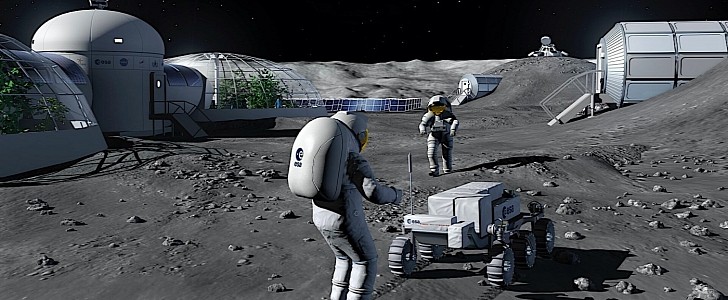As per the calculations made by the European Space Agency (ESA), the following decade should bring a flood of missions to the Moon, both robotic and crewed. The organization says, citing data from market analysts Northern Sky Research, that 250 missions will fly to the Moon over the next ten years, and that will raise significant communication and navigation issues.
The idea of having a network of satellites dedicated to guiding these missions is not new, but ESA is pushing down hard on the throttle through the Moonlight initiative, meant to create “a dedicated infrastructure of satellites around the Moon.”
The program is open to companies located in Europe and Canada, and calls on them all to “provide telecommunications and navigation services to these lunar missions.”
The goal is to have in place a hardware network capable of making the operation of spacecraft, landers and rovers easier. For example, using this network ESA’s European Large Logistics Lander will not have to depend on line-of-sight connection with the Gateway lunar space station, and this would “improve the accuracy of its landing, and enable access to areas out of sight of the Gateway.”
The same goes for all other missions. Additionally, “science missions using Moonlight will be able to live stream more high-quality video than would be possible without it, increasing the volumes of data and the speed of transfer and thus enabling better science to be done.”
At the time of writing, ESA is involved in “two studies with two consortia of space companies based in Europe that assess the business case and the technical solutions for building and operating a constellation of lunar satellites.“
Both are open to those able and willing to join, but no timetable has been set for when a potential network of satellites could be deployed around the Moon. Ideas and solution can be submitted for review until October 28.
The program is open to companies located in Europe and Canada, and calls on them all to “provide telecommunications and navigation services to these lunar missions.”
The goal is to have in place a hardware network capable of making the operation of spacecraft, landers and rovers easier. For example, using this network ESA’s European Large Logistics Lander will not have to depend on line-of-sight connection with the Gateway lunar space station, and this would “improve the accuracy of its landing, and enable access to areas out of sight of the Gateway.”
The same goes for all other missions. Additionally, “science missions using Moonlight will be able to live stream more high-quality video than would be possible without it, increasing the volumes of data and the speed of transfer and thus enabling better science to be done.”
At the time of writing, ESA is involved in “two studies with two consortia of space companies based in Europe that assess the business case and the technical solutions for building and operating a constellation of lunar satellites.“
Both are open to those able and willing to join, but no timetable has been set for when a potential network of satellites could be deployed around the Moon. Ideas and solution can be submitted for review until October 28.






